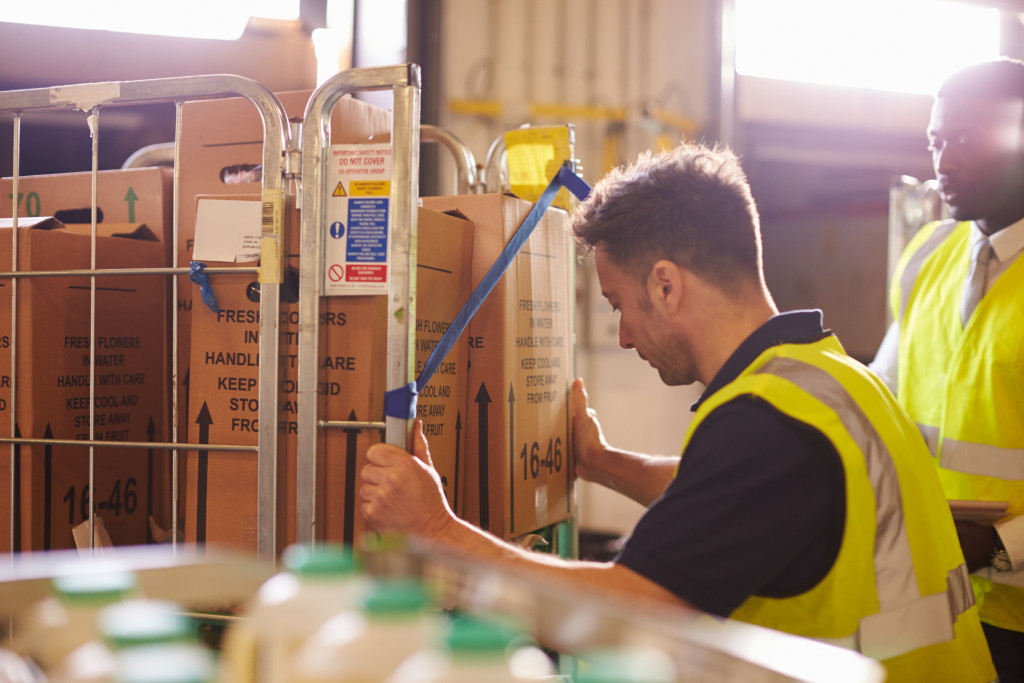- Regularly maintain equipment to keep production running smoothly and reduce wear and tear.
- Provide your staff with adequate training and guidance for efficient operations in business.
- Implement quality control procedures to ensure products meet standards before shipping.
- Optimize storage spaces for maximum efficiency and organization.
- Establish reliable supplier collaboration to avoid stock-outs and delays, which can affect your entire operation.
As a business professional, you know the importance of efficient and streamlined production processes in a warehouse. But, issues do arise that can halt production and cause delays. And while some issues may seem minor, they can quickly snowball into more significant problems. To keep your warehouse business running smoothly, it’s crucial to know how to avoid and handle any production issues that come your way. This blog post will discuss valuable tips to help you maintain a top-performing warehouse and prevent production issues.
1. Regular Equipment Maintenance
The equipment in your warehouse, such as conveyor belts, pallet jacks, and forklifts, are the backbone of your production processes. Any malfunction can lead to delayed production, causing a ripple effect throughout the business operations. Therefore, it’s essential to have a regular maintenance schedule for all your equipment. Maintenance involves the following:
a. Cleaning
When machines become dirty, they can malfunction and cause production delays. Regularly cleaning your equipment with compressed air or a degreaser will help them run better and last longer.
b. Inspections
Inspecting machines regularly can help you identify potential problems early and avoid costly repairs or downtime. Some key components to check include belts, pulleys, bearings, and chains. If any of these components are worn or damaged, they should be replaced immediately.
c. Lubrication
A machine’s moving parts need to be lubricated regularly to ensure they run smoothly and efficiently. Be sure to use the specific type of lubricant the manufacturer recommends for optimal performance. This will also help reduce wear and tear on the equipment.
d. Repairs
A machine must be repaired if it is broken or malfunctioning as soon as possible. Otherwise, you may have more significant delays and lost production time. You can hire an outside contractor to do the repairs or use in-house technicians.

2. Efficient Staff Training and Management
Warehouse staff training and management are two fundamental issues that you cannot overlook. First, ensure that your workers receive proper training and guidance on using the equipment and the procedures involved. Poorly trained staff are likely to cause production issues and safety hazards. Secondly, arrange regular meetings with your supervisors and team leaders to address your workers’ challenges and make necessary adjustments.
3. Keep Up with Quality Standards
The quality of the products being shipped out of your warehouse is a key factor in how successful your business is. It’s essential to maintain consistent quality standards throughout the production process. Ensure your workers are familiar with the procedures and regulations for inspecting and verifying products.
Additionally, you want to ensure your packaged materials are up to standard. Investing in a quality packaging inspection machine can help confirm that the goods are safely packaged and meet quality requirements before being shipped out. This will save you from costly returns and complaints from customers.
4. Optimize Storage Spaces
Another major cause of production issues in your warehouse is inefficient storage space and poor organization. Bottlenecks and cluttered storage areas can disrupt the workflow and reduce productivity. Thus, decluttering your warehouse and arranging everything systematically is a good idea. You can also consider adding additional shelves and racks to improve storage capacity.
Additionally, a logical labeling system for all the products will make it easy for your staff to retrieve and deliver products, minimizing delays and errors. Many warehouse management systems offer tagging and labeling capabilities, enabling you to implement this system quickly.

5. Collaborating with Trusted Suppliers
Collaborating with trusted suppliers is a long-term strategy to avoid production issues related to stock and delivery. When you trust your suppliers to deliver timely and quality products, you can reduce the risk of stock-outs and delays. Therefore, it’s vital to establish a reliable supply chain and lead time to ensure that your supplier meets your needs. Regular communication ensures both parties understand their roles and obligations, creating a more efficient end-to-end supply chain.
The primary focus of a warehouse business is efficiency, speed, safety, and accuracy. Unfortunately, production issues and bottlenecks can derail any of these. You can ensure a smooth-running warehouse operation with proper maintenance, staff training, quality control, storage optimization, and reliable supplier collaboration. Following these tips will help you avoid production delays and errors and lead your business to long-term success.

